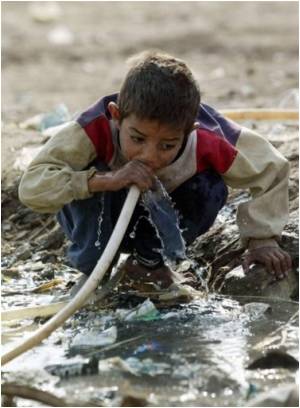Cholera As A Diarrheal Disease Of Infective Origin: Clinical Manifestations, Diagnosis, Prognosis And Complications
Etiology Of Cholera: Unhygienic Water And Food

Clinical Presentations Of Cholera
Severity of cholera varies from a completely asymptomatic form to fulminant diarrhea and shock. In el tor cholera, outbreaks , the proportion of asymptomatic and mild cases are higher than the severe cases.
In most cases, the incubation period varies from less than a day to 5 days. Mild cases of cholera may be asymptomatic and diagnosis has to be established by stool culture. In some, only a mild diarrheal illness may be seen. In moderate and severe cases, the onset is abrupt with uncontrollable, painless, watery diarrhea and effortless vomiting. The excreta may contain fecal material at the onset by soon it assumes the characteristic “rice water” appearance due to the presence of flakes of mucus and large number of vibrios. Watery stools are passed in quick seccession. In many patients vomiting supervenes either along with the diarrhea or may follow later. Nausea is absent. Vomitus consists of clear, watery fluid. Loss of fluid and electrolytes leads to dehydration, acidosis and shock. Earliest indication of fluid deficit is thirst with dryness of the mouth and tongue. Decreased renal blood flow produces oliguria and renal shutdown. The patient may be unable to talke due to loss of voice. Painful mascular cramps develop due to hyponatremia.
Mental state remains clear. Restlessness is the forerunner of shock. When dehydration is severe, the eyes are sunken, skin is shriveled, neck veins are collapsed and signs of shock supervene. The rectal temperature is usually normal or raised even though the extremities may be cold. The abdomen is scaphoid and nontender. The illness seldom lasts for more than 3 to 5 days. Rarely large amounts of fluid may collect in the intestinal lumen and severe dehydration, shock and death may result even before evacuation occurs. The term “cholera sicca” is used to denote such cases.
Differential diagnosis: A clinically indistinguishable picture can be presented by about 25 intestinal pathogens such as enterotoxigenic E.Coli, other vibrios, Campylobacter jejuni, rotavirus and others. Bacterial and toxin type of food poisoning has to be looked for and excluded. Gastroenteritis may resemble cholera.
A Pediatric Patient With Cholera

Infectious Diseases
Diagnosis, Prognosis And Complications Of Cholera
Diagnosis: Laboratory diagnosis is made by isolating the organisms from proper stool samples collected before the administration of antimicrobial agents. The specimen should be transported to the laboratory without delay. Vibrios can be demonstrated by direct microscopic examination of the feces, but identification is not possible.
Prognosis: During epidermics, mortality may be as high as 30%. Malnutrition, intercurrent illness, and want of proper medical aid account for this pathetic situation. Diarrhea is the most common cause of infantile and childhood mortality in developing countries. Adequate and early replacement of fluid and electrolytes reduces mortality considerably. Introduction of the oral rehydration solution (ORS), recommended widely by the WHO and adopted as the first line of treatment in diarrheal diseases has brought down mortality considerably. Many complications can also be prevented by early rehydration.
Complications: Hypokalemia may lead to fatal cardiac arrhythmias, abdominal distension an muscle paralysis. Injudicious administration of electrolyte solutions intravenously without correcting metabolic acidosis may result in acute pulmonary edema. Convulsions may develop in children due to cerebral venous thrombosis. Severe hypoglycemia may also contribute to this symptom. Severe shock leads to renal cortical necrosis and renal failure. Other complications include venous thrombosis, cataract and prolapsed of the rectum in children. Florid malnutrition may develop after diarrheal episodes in children from poor communities.
© 2014 Funom Theophilus Makama









